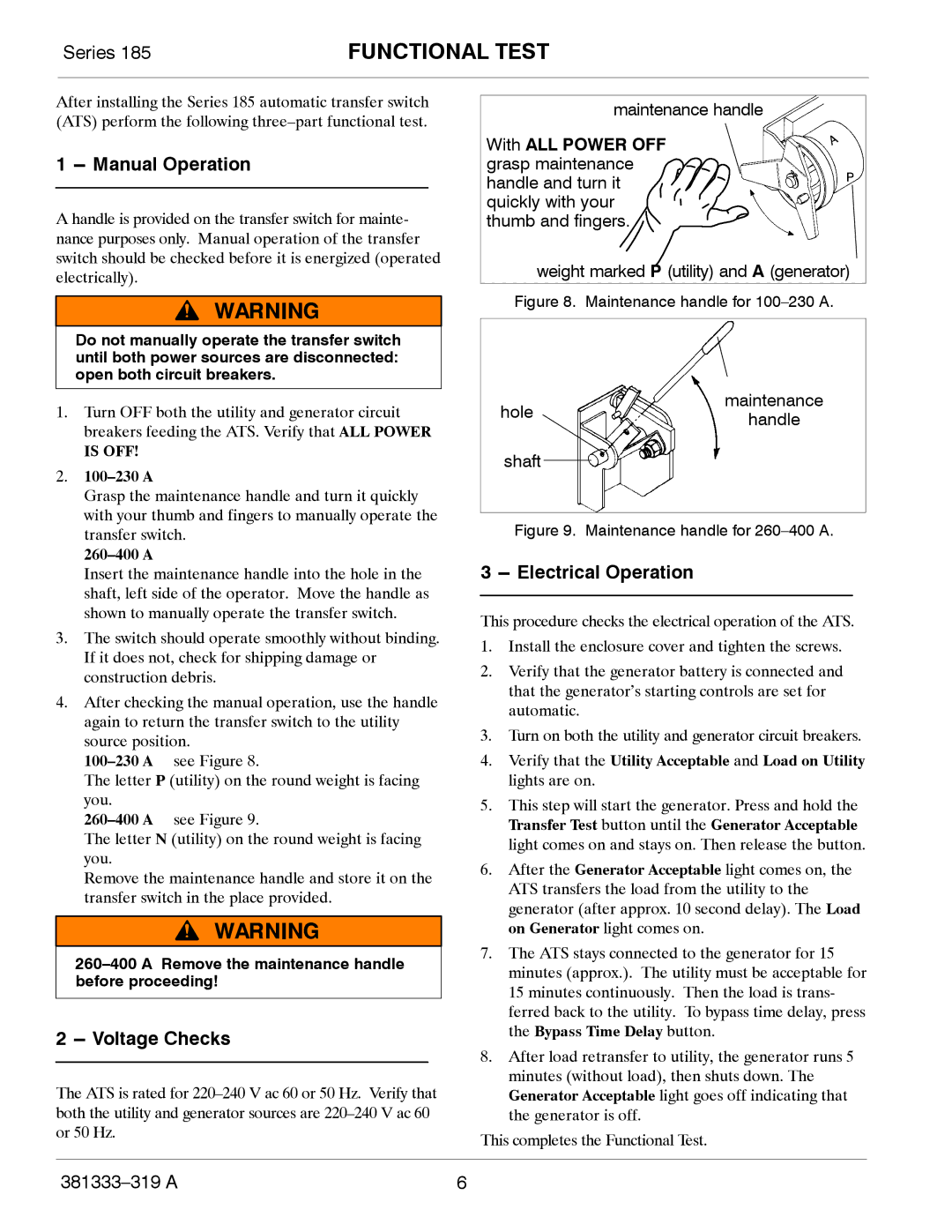185 specifications
The Emerson 185 is an advanced and versatile automated control system that stands out for its exceptional performance and reliability in various industrial applications. Designed to streamline operations, improve efficiency, and ensure safety, the Emerson 185 integrates cutting-edge technologies to address the complex demands of modern industries.One of the main features of the Emerson 185 is its modular architecture, which allows for easy scalability and customization. This flexibility enables operators to adapt the system according to their specific requirements, whether for small-scale processes or large, intricate industrial plants. The modular design simplifies upgrades and maintenance, ensuring that businesses can stay ahead in today's fast-paced environment.
Incorporating advanced control algorithms, the Emerson 185 enhances process automation. Its robust predictive analytics capabilities allow for real-time monitoring and data analysis, which aid in optimizing performance and reducing downtime. With this technology at their disposal, operators can anticipate potential issues and take proactive measures, resulting in improved operational efficiency.
The Emerson 185 is also equipped with user-friendly interfaces that facilitate intuitive operation. Its advanced graphical displays and customizable dashboards provide operators with comprehensive visibility into process performance. This feature allows for informed decision-making and quick responses to unexpected situations, ultimately contributing to increased productivity.
Another significant characteristic of the Emerson 185 is its emphasis on safety and environmental compliance. The system includes built-in safety features and adheres to international standards, ensuring that operations not only meet regulatory requirements but also promote a safer working environment. The emphasis on sustainability aligns with the growing expectation for environmental responsibility in industrial practices.
Communication is a key component of the Emerson 185. The system supports various communication protocols, enabling seamless integration with existing infrastructure and third-party devices. This interoperability ensures that organizations can leverage their current investments while enhancing the overall control capabilities of their processes.
In summary, the Emerson 185 combines modularity, advanced automation, user-friendly interfaces, safety features, and effective communication to deliver a comprehensive solution for modern industrial challenges. Its focus on improving efficiency and ensuring reliability makes it a valuable asset for businesses aiming to optimize their operations and maintain a competitive edge in today's ever-evolving market. With the Emerson 185, organizations can confidently navigate the complexities of modern industrial environments.

